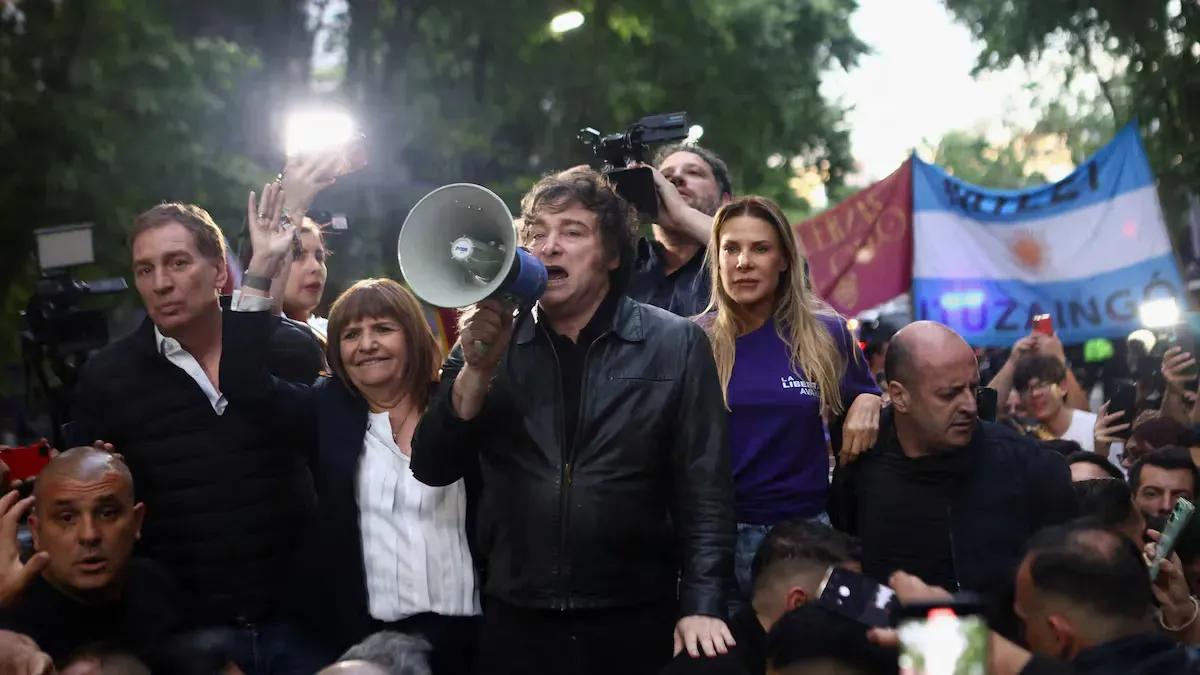For years, Latin America was a footnote in Washington's agenda: a landscape of unstable democracies, strategic resources, and Cold War nostalgia. But Donald Trump, in his second term, has decided to look south again. Not out of hemispheric romanticism or democratic solidarity, but pure calculation: the Latin American continent has become the most malleable —and dangerous— piece on the global chessboard of the 21st century.
The region matters again because the international order is crumbling. If the 20th century was marked by the containment of communism, the 21st is defined by the containment of China. And Latin America, rich in critical minerals, emerging markets, and migration routes, has become a theater of geopolitical and symbolic dispute. In this new phase of what some scholars already call “Monroe Doctrine 2.0,” Trump does not need to justify his presence: he only needs to invoke the mantra of the Western Hemisphere as a natural sphere of influence for the United States.
The Club as Language
Trump has replaced traditional American “soft power” with a coercive diplomacy. He does not offer alliances; he imposes them. From military operations in the Caribbean against drug trafficking to trade pressure on Brazil and Mexico, the message is clear: submission as a condition for cooperation. This practice resembles more the imperial logics of the 19th century than the multilateral architecture of the 21st.
His relationship with Javier Milei is a paradigmatic example. What appears to be an ideological bond between like-minded leaders is, in reality, an experiment in strategic subordination. Milei receives political support and international legitimacy; Trump obtains a symbolic showcase for his narrative of “hemispheric restoration.” In return, Argentina becomes an experiment in automatic alignment in economic and diplomatic matters.
The same pattern is repeated with Nayib Bukele, who has become the guardian of migration order and “dirty work” in security matters. The Salvadoran receives the blessing of U.S. power while dismantling institutional checks and balances in his country. Trump not only tolerates these authoritarian tendencies; he celebrates them. Because, in his view, order —even if authoritarian— is preferable to chaos.
The Inverted Map of Power
Trump's interest in Latin America should not be interpreted in moral or ideological terms, but structural ones. Washington no longer competes with Moscow, but with Beijing. And China has infiltrated the economic interstices of the region with surgical efficiency: investments in infrastructure, soft loans, and control of strategic resources. In the face of this silent expansion, Trump responds with a defensive instinct that resembles more an imperial reflex than a rational strategy.
Mexico, Brazil, Panama, Paraguay, and Ecuador are nodes in this reconfiguration. Claudia Sheinbaum's pragmatism in the face of tariff threats demonstrates that Trump has managed to reinstall fear as a diplomatic instrument. In Brazil, his sanctions have reactivated nationalist tensions and paradoxically strengthened Lula, who has had to reposition himself on the international stage. In Panama, the canal is once again a symbol: the obsession with “recovering” what has been lost translates into pressures to limit Chinese influence in ports and construction projects.
What is troubling is that this strategy does not respond to a coherent state design, but to a personalistic and erratic logic. Trump does not act as a head of state, but as a geopolitical businessman: he measures foreign relations as a balance of gains and losses. And Latin America, with its institutional vulnerability and commercial dependence, is ideal ground for his rhetoric of domination.
The Mirage of Alignment
Trump's allies —Milei, Bukele, Peña, Noboa, Paz— see in him a gateway to global power. But what they receive is, in reality, a contemporary version of old American paternalism: conditional assistance, media backing, and an uncertain promise of prosperity. In return, they must become political extensions of the Trumpist agenda: hardening migration policies, isolating China, and assuming the internal cost of that subordination.
The underlying question is whether this renewed hemispheric relationship can be sustained over time. Because beneath the diplomatic club lies a contradiction: Trump demands obedience from democratic governments while rewarding authoritarian regimes if they are functional to his objectives. In that paradox resides the seed of a new regional distrust toward the United States, a déjà vu of inter-American history.
The Ghosts of the Past
Military interventionism in the Caribbean, the rhetoric against Venezuela and Colombia, and the hyper-personalization of American diplomacy evoke times when the fate of Latin America was decided in Washington. The difference is that today the world is multipolar, and the margins for that type of hegemony are narrower. However, Trump seems to deliberately ignore this: his foreign policy seeks to restore a past that no longer exists.
If the first Monroe Doctrine was a shield against European colonialism, this second version is a sword against any Latin American autonomy. But the risk is that, in his attempt to reaffirm hemispheric supremacy, the United States may end up accelerating its own decline of legitimacy. China does not need to invade or pressure; it is enough for it to wait. Trump, with his aggressiveness, could do the work for it.
The Future of a Fatigued Hemisphere
Trump looks to Latin America because he needs to demonstrate power in a world that no longer recognizes him as such. But the real challenge is not geopolitical but civilizational: can a power maintain its hegemony through fear and arbitrariness?
The region, caught between the club and dependency, continues to oscillate between fascination and resistance. Perhaps the dilemma is not whether the United States is looking south again, but whether Latin America, this time, will dare to look the other way.

Comments